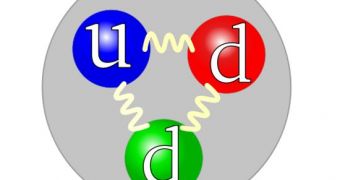Physicists at the US Department of Energy's (DOE) Oak Ridge National Laboratory (ORNL) have recently managed to demonstrate that the magnetic properties a material has are a clear indicator of its superconducting properties. They add that the same mechanisms allowing for superconductivity to appear in copper-based high-temperature superconductors are also at work in the recently discovered class of iron-based superconductors. This has been demonstrated with neutron-scattering experiments performed at the laboratory's Spallation Neutron Source (SNS) facility.
Additional investigations were also conducted at the ORNL High Flux Isotope Reactor (HFIR), and at the Ruther Appleton Laboratory's (APL) ISIS Facility, in the United Kingdom. Details of the work appear in a recent issue of the esteemed scientific journal Nature Physics. Superconductors are among the most widely researched materials at this point, primarily because they have the ability to enable highly energy-efficient technologies. Their main property is the fact that they provide no resistance to electricity flowing through them, which means that very little to no amount of electrons are lost as heat.
“The pairing up of electrons is essential for the formation of the macroscopic quantum state giving rise to superconductivity. One of the leading proposals for the pairing mechanism in the iron-based superconductors is that magnetic interactions, provide the glue that binds the electrons together,” ORNL expert Mark Lumsden, who has been the lead researcher on this investigation, explains. He reveals that iron-based superconductors are new materials, in the sense that this property was only demonstrated by Japanese researchers in 2008. Until then, only copper-based materials were known to be capable of this, and the breakthrough focused a lot of attention on the new material's structure and properties.
“Neutron scattering is the only way to study the full wave vector and energy dependence of the spin excitations that are believed to be behind these superconducting properties,” ORNL Neutron Scattering Science Division expert Andrew Christianson adds. He is also a coauthor of the Nature paper. This investigation method is arguably one of the best methods of analysis, in terms of determining the molecular structure of and interactions going on in advanced materials such as superconductors. The funding for the work came from the DOE's Office of Science.

 14 DAY TRIAL //
14 DAY TRIAL //